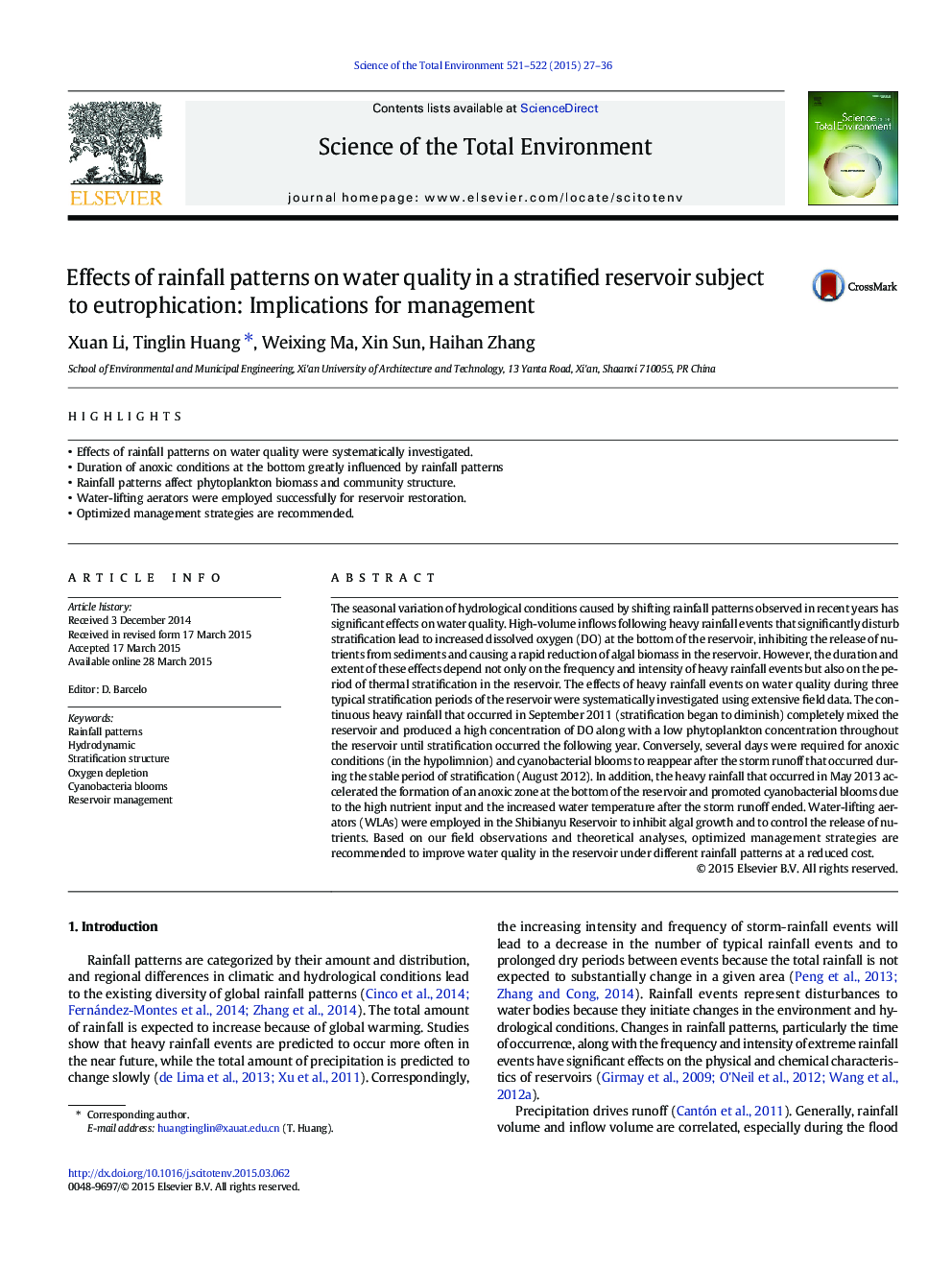| کد مقاله | کد نشریه | سال انتشار | مقاله انگلیسی | نسخه تمام متن |
|---|---|---|---|---|
| 6326554 | 1645536 | 2015 | 10 صفحه PDF | دانلود رایگان |
عنوان انگلیسی مقاله ISI
Effects of rainfall patterns on water quality in a stratified reservoir subject to eutrophication: Implications for management
ترجمه فارسی عنوان
اثرات الگوهای بارندگی بر کیفیت آب در یک مخزن طبقه بندی شده تحت تاثیر ائتروفیکی: پیامدهای مدیریت
دانلود مقاله + سفارش ترجمه
دانلود مقاله ISI انگلیسی
رایگان برای ایرانیان
کلمات کلیدی
الگوهای بارش هیدرویدیامیک، ساختار طبقه بندی، کاهش اکسیژن، سیب سبز مدیریت مخزن،
موضوعات مرتبط
علوم زیستی و بیوفناوری
علوم محیط زیست
شیمی زیست محیطی
چکیده انگلیسی
The seasonal variation of hydrological conditions caused by shifting rainfall patterns observed in recent years has significant effects on water quality. High-volume inflows following heavy rainfall events that significantly disturb stratification lead to increased dissolved oxygen (DO) at the bottom of the reservoir, inhibiting the release of nutrients from sediments and causing a rapid reduction of algal biomass in the reservoir. However, the duration and extent of these effects depend not only on the frequency and intensity of heavy rainfall events but also on the period of thermal stratification in the reservoir. The effects of heavy rainfall events on water quality during three typical stratification periods of the reservoir were systematically investigated using extensive field data. The continuous heavy rainfall that occurred in September 2011 (stratification began to diminish) completely mixed the reservoir and produced a high concentration of DO along with a low phytoplankton concentration throughout the reservoir until stratification occurred the following year. Conversely, several days were required for anoxic conditions (in the hypolimnion) and cyanobacterial blooms to reappear after the storm runoff that occurred during the stable period of stratification (August 2012). In addition, the heavy rainfall that occurred in May 2013 accelerated the formation of an anoxic zone at the bottom of the reservoir and promoted cyanobacterial blooms due to the high nutrient input and the increased water temperature after the storm runoff ended. Water-lifting aerators (WLAs) were employed in the Shibianyu Reservoir to inhibit algal growth and to control the release of nutrients. Based on our field observations and theoretical analyses, optimized management strategies are recommended to improve water quality in the reservoir under different rainfall patterns at a reduced cost.
ناشر
Database: Elsevier - ScienceDirect (ساینس دایرکت)
Journal: Science of The Total Environment - Volumes 521â522, 15 July 2015, Pages 27-36
Journal: Science of The Total Environment - Volumes 521â522, 15 July 2015, Pages 27-36
نویسندگان
Xuan Li, Tinglin Huang, Weixing Ma, Xin Sun, Haihan Zhang,
